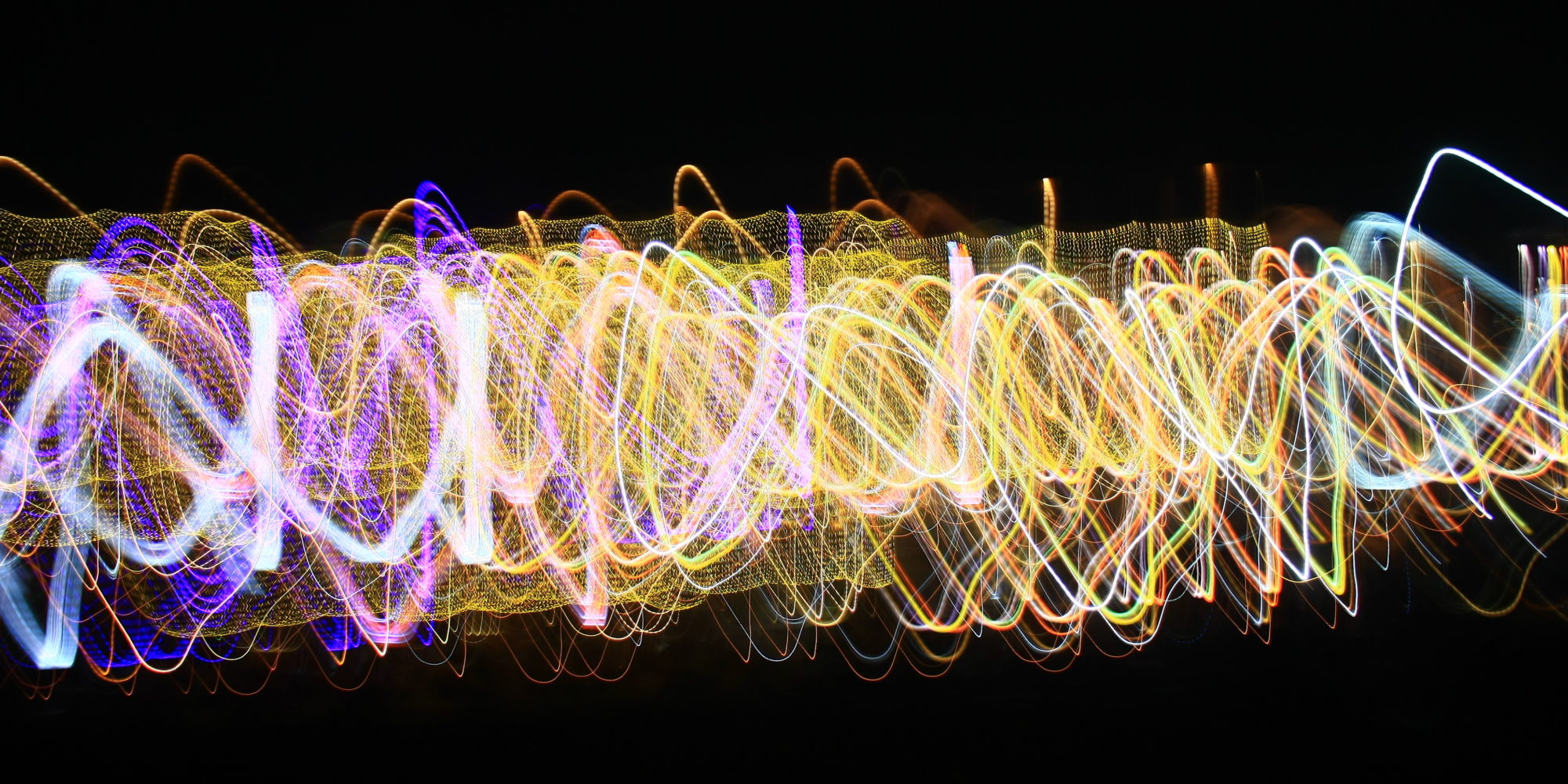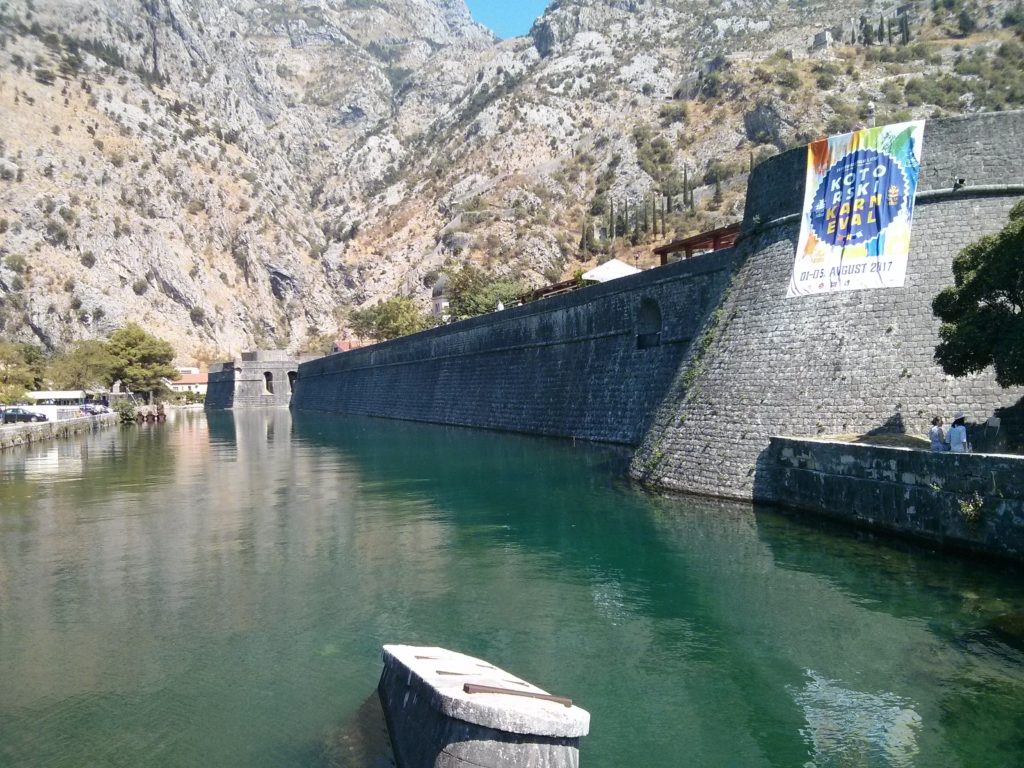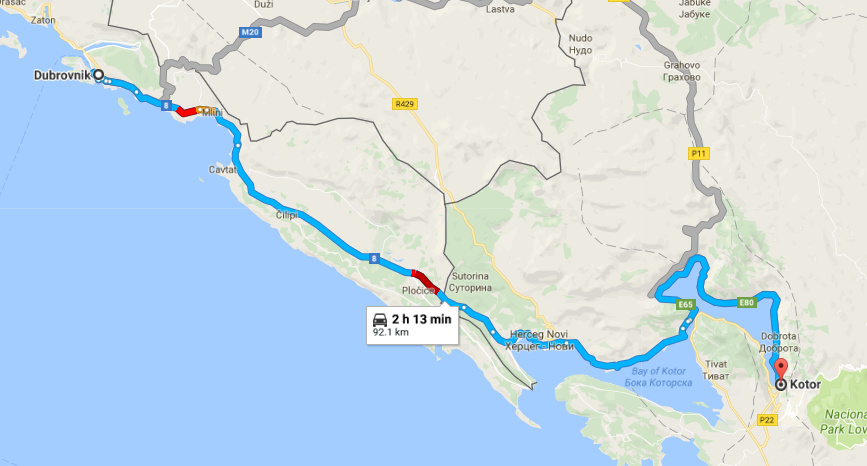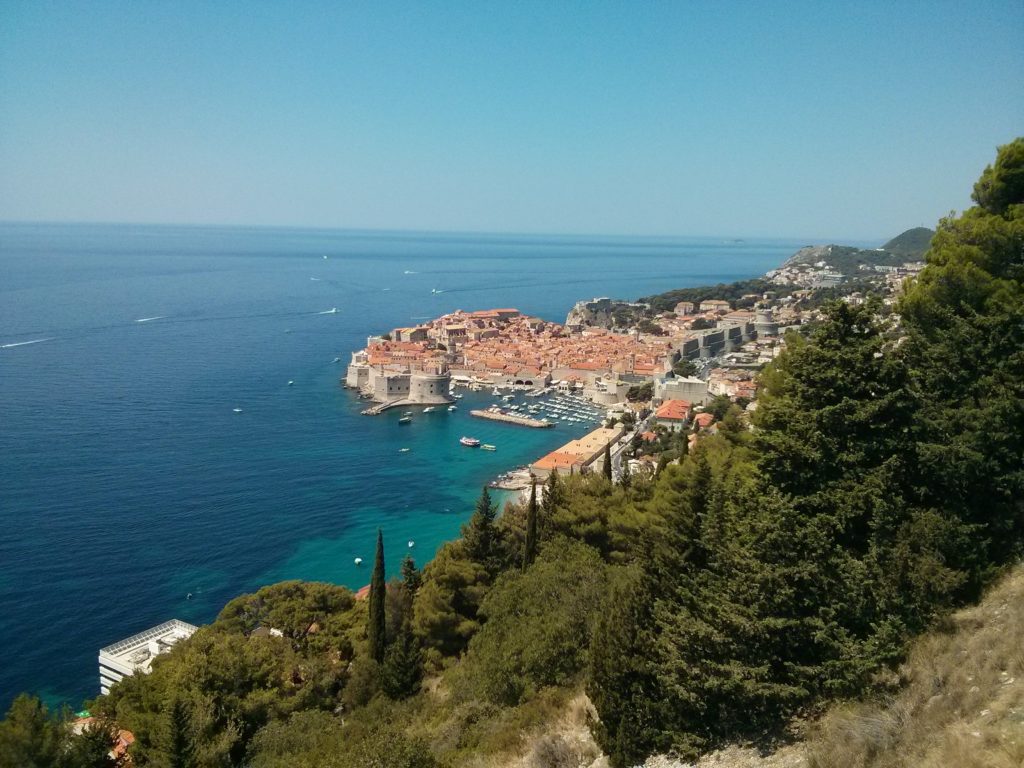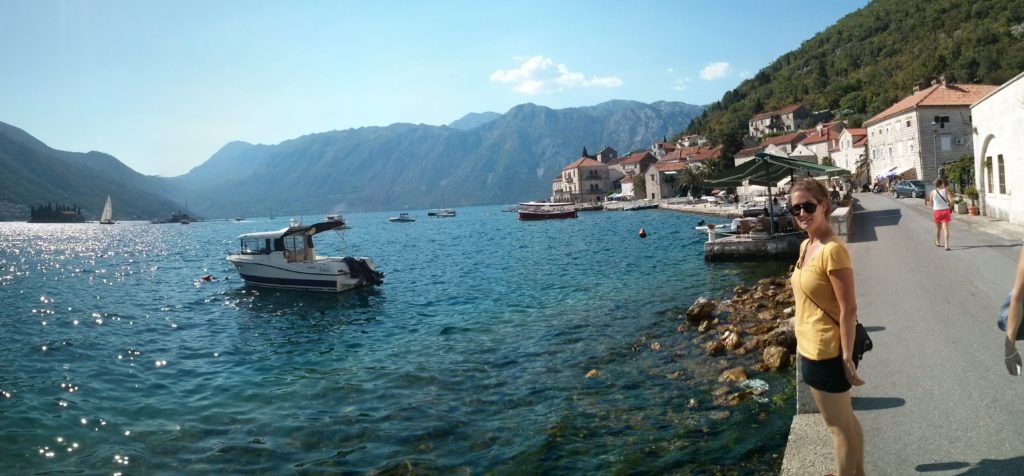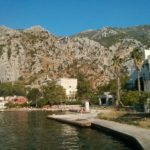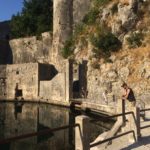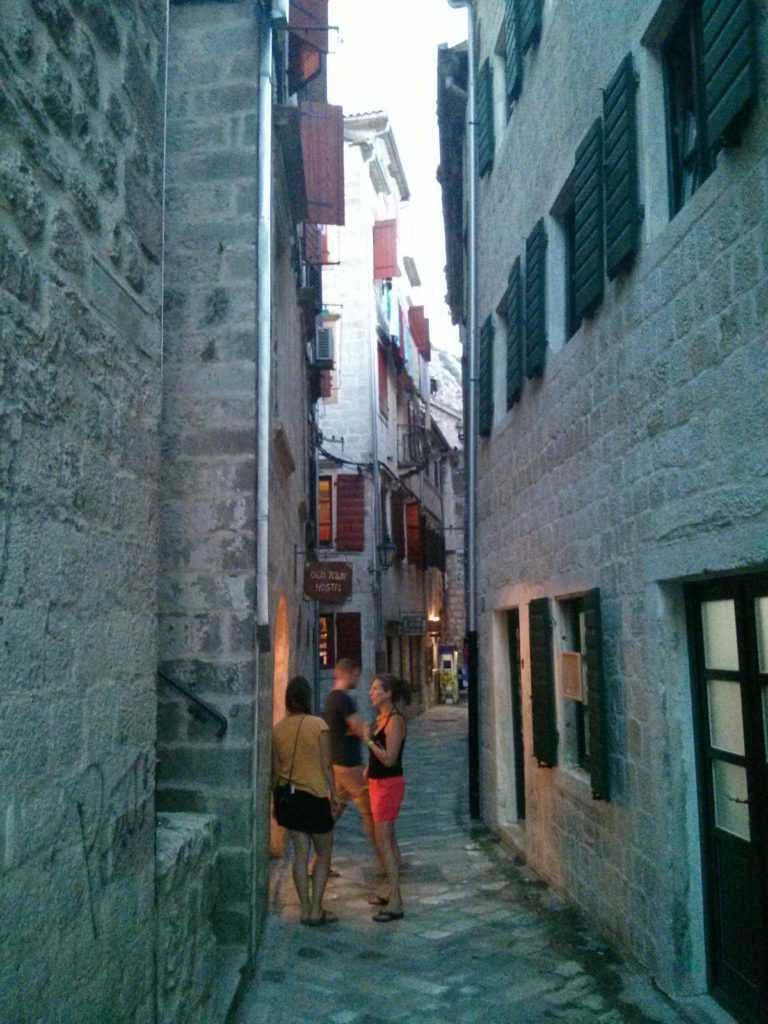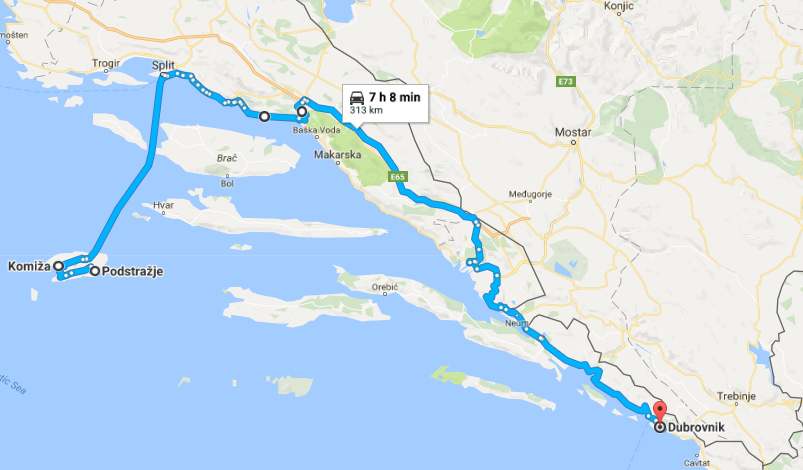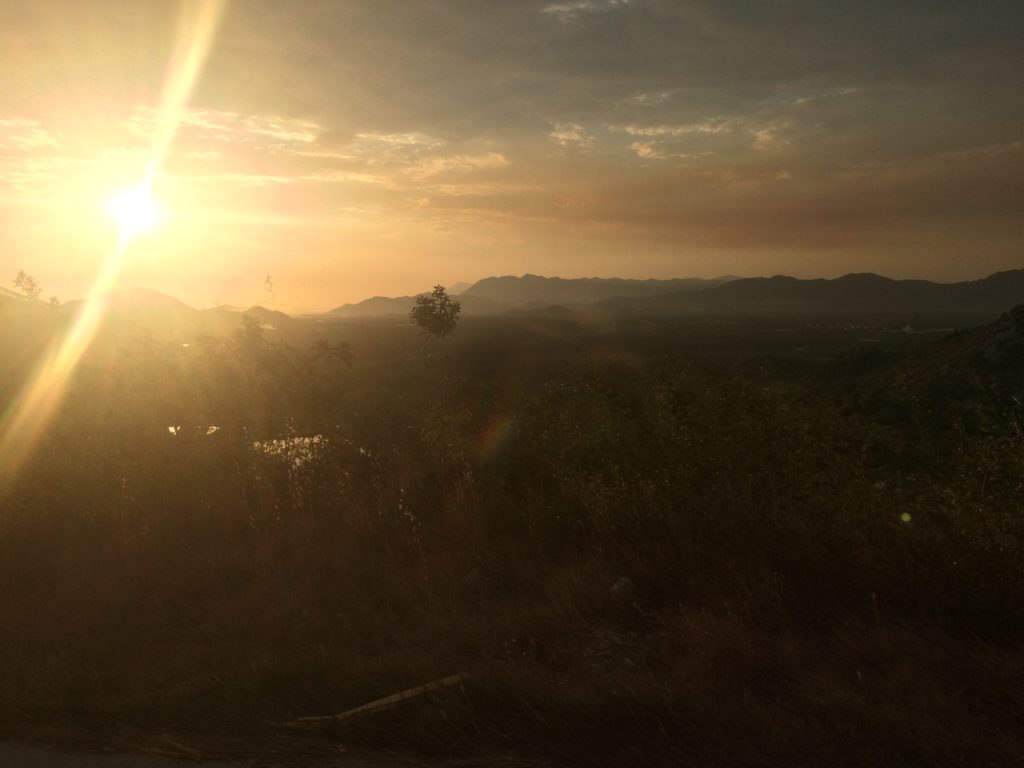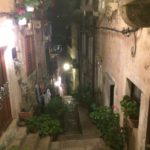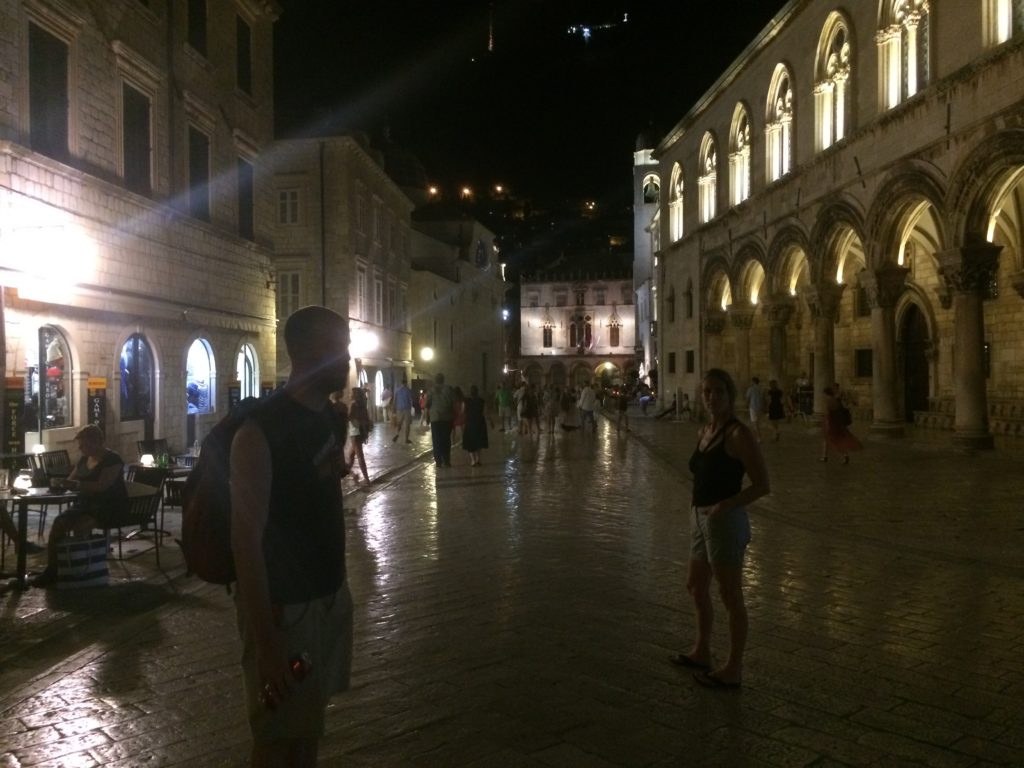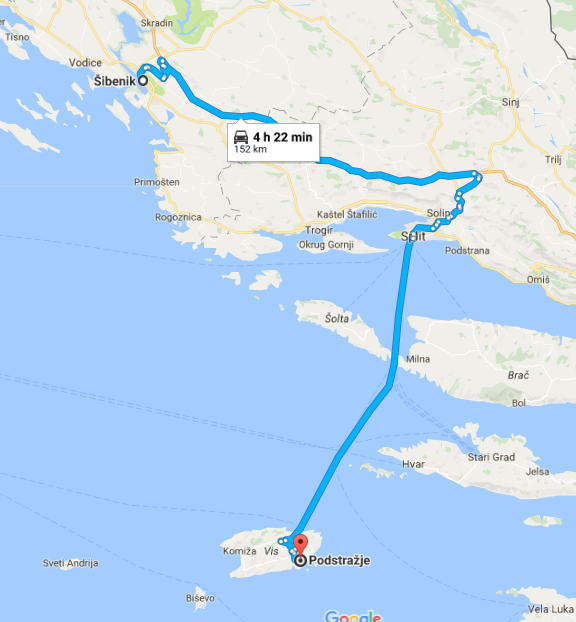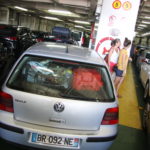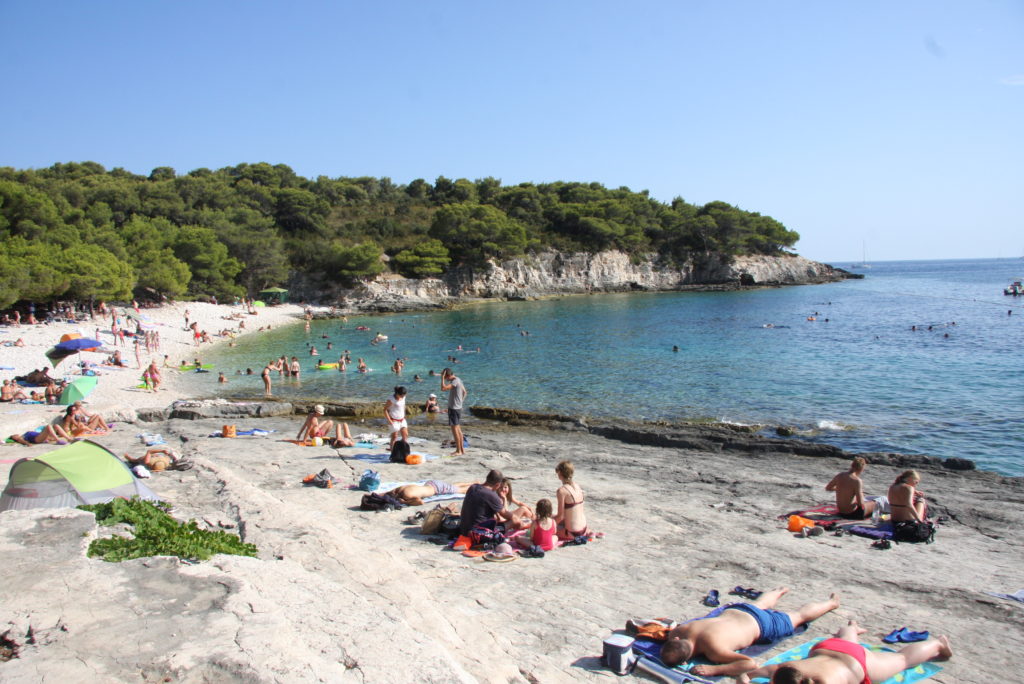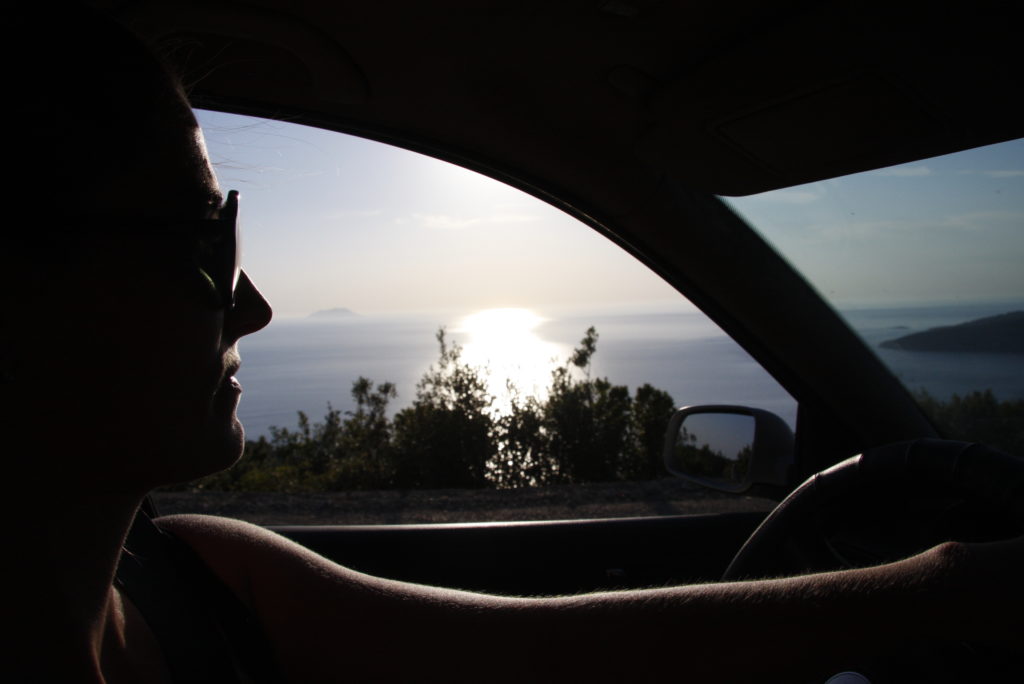Le reveil n’a pas été trop ardu, mais ce n’était pas tellement la super forme. J’avais donc deux objectifs pour la journée : cuver mon alcool en après-midi devant mon ordinateur puis sortir au coucher du soleil pour aller escalader les remparts. Le premier repas de la journée s’est avéré être une légère arnaque mais bon, nous avions déjà remarqué que Kotor s’en allait dans la direction de la Croatie. Par la suite, je me suis dirigé vers le centre d’achat voisin de la vielle ville afin de voir s’il ne s’y vendait pas des objectifs, puis une fois revenu bredouille, je me suis posé devant mon ordinateur alors qu’Audrey et sa mère sont parties à la plage.
La mère d’Audrey devait revenir un peu avant 18h00 pour m’accompagner jusqu’au remparts, alors j’ai été étonné de les voir de retour si tôt après avoir quitté pour la plage municipale. Il semblait que la qualité de l’eau n’était pas à leur goût. Disons qu’elles n’avaient pas entièrement tort… il flottait pas mal de cochonneries aux abords de la ville. J’ai terminé mon article, me suis réhydraté à fond et rempli ma gourde, car j’allais escalader au dessus de 150 mètres de dénivelé par plus de 35 degrés. Malheureusement, l’accès aux remparts était payant, alors faute de fonds, la mère d’Audrey a dû rebrousser chemin et reporter sa visite à demain. J’ai pour ma part démarré l’ascension et excepté quelques pauses pour admirer le paysage, j’ai atteint le sommet en un temps record, battant par le fait même le soleil qui lui, descendait derrière les montagnes.
La vielle ville de Kotor est entourée de fortifications, mais il existe aussi un réseau de remparts intégrés à même la montagne qui surplombe la ville qui, selon un pamphlet, protégeait jadis l’ancienne Kotor, construite à même ses flancs. Entouré montagnes escarpées et au fond d’une baie, l’endroit était tout à fait imprenable, et la vue aussi; l’une des plus belles qui m’ait été donné de voir (la plus belle reste celle-ci). Une fois en haut et en redescendant, j’ai complètement abusé du mode panoramique de mon téléphone, alors je laisse les mégapixels parler à ma place (cliquez pour des versions plein écran).

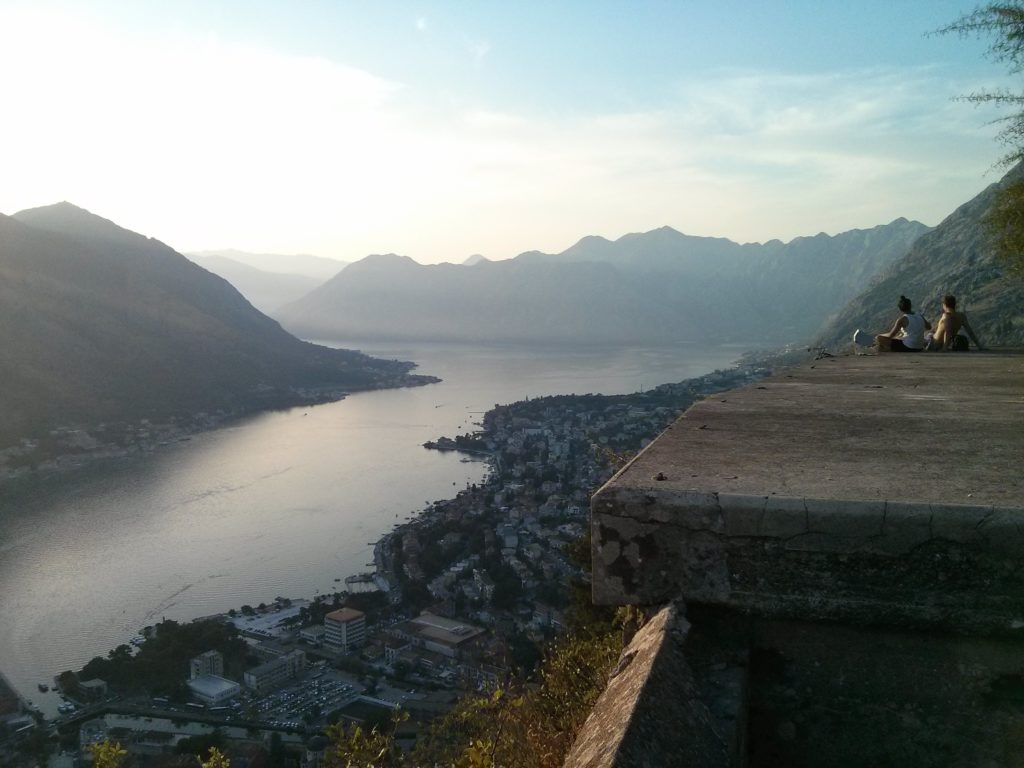
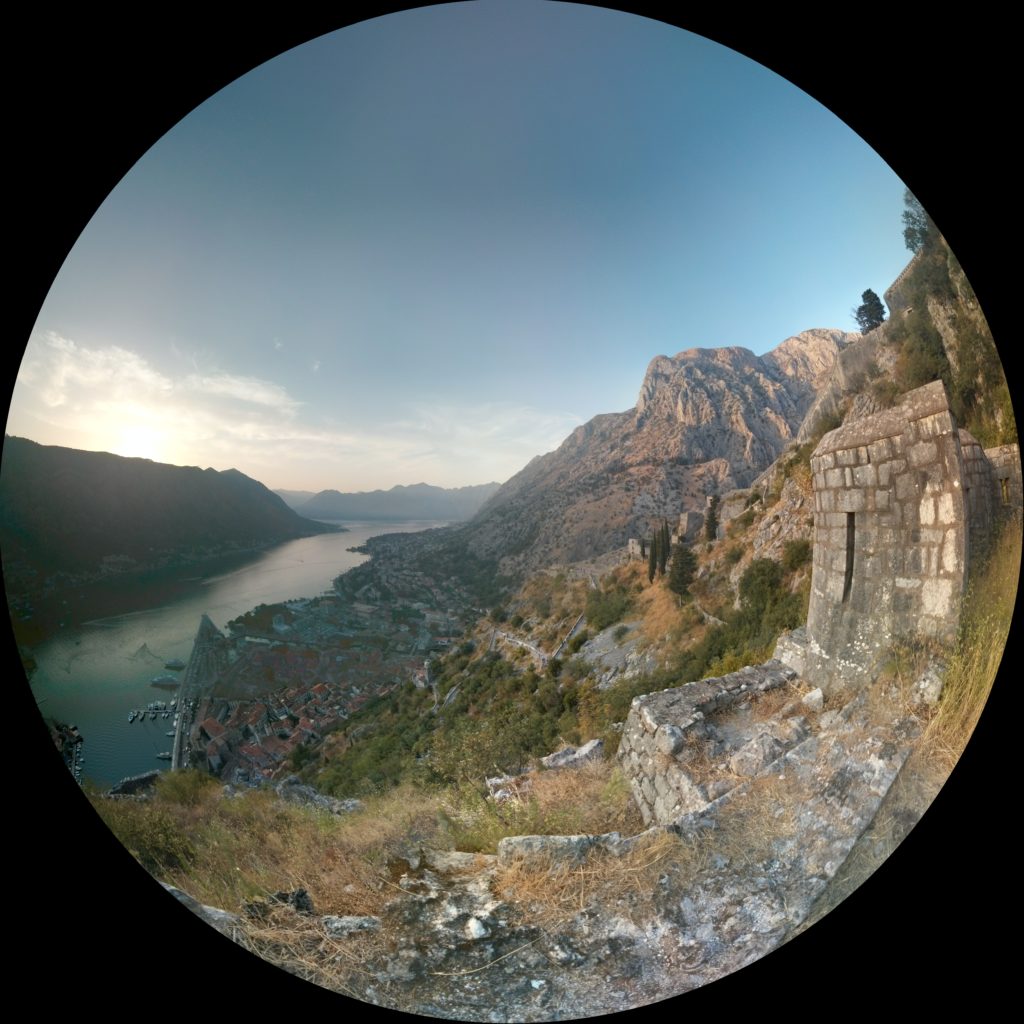
Ce matin, pendant qu’Audrey et moi faisions la grasse matinée, sa mère s’était liée d’amitié avec une employée de l’auberge et les deux s’étaient donné rendez-vous pour 22h00 afin d’aller prendre un verre dans un bar jazz. 45 minutes plus tard, alors que je trépignais d’impatience, le fait qu’elle ne viendrait pas a finalement été accepté et nous nous sommes dirigé les trois vers le bar en question. La mère d’Audrey fatiguée, Audrey et moi avons terminé la soirée à un « bar à vin » afin d’aller essayer les produits de la viticulture régionale. Verdict: très réussis.
